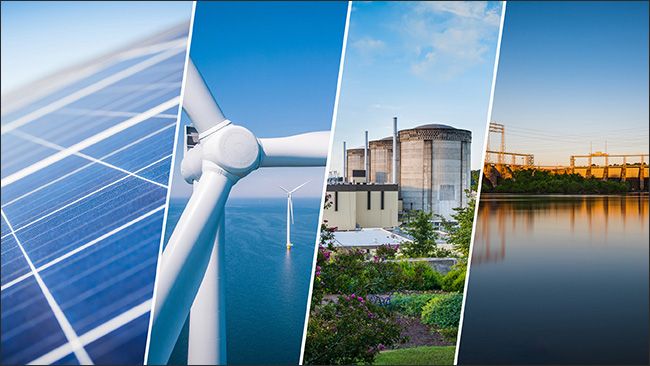Duke Energy files Carolinas Carbon Plan with NCUC

Duke Energy filed this week its proposed clean energy plan, the Carolinas Carbon Plan, with the North Carolina Utilities Commission (NCUC).
The plan outlines Duke Energy’s path to reduce carbon dioxide (CO2) emissions by 70 percent by 2030 and achieve carbon neutrality by 2050. It also offers regulators multiple portfolio options that balance affordability and reliability for customers.
The company has proposed a diverse mix of solar, storage, natural gas, wind, and small modular nuclear generation to get there and energy efficiency programs to help customers reduce their energy use. It also calls for the eventual elimination of coal as part of the mix. Duke Energy has already retired two-thirds of its coal plants in North Carolina and South Carolina, with the rest retired by the end of 2035
“We are committed to bringing our customers and communities affordable, reliable, carbon-free energy as quickly as possible,” Stephen De May, Duke Energy’s North Carolina president, said. “Customers in North Carolina and South Carolina deserve an orderly energy transition that supports communities and maintains affordable rates while ensuring the continued reliable service and economic competitiveness on which both states depend.”
As mentioned, Duke Energy is offering multiple different portfolios to balance reliability and affordability. The first portfolio achieves the 70 percent target by 2030, while the other three portfolios achieve the 70 percent target by 2032 or 2034 through increased reliance on both onshore and offshore wind and/or small modular nuclear generation. All four portfolios will reach carbon neutrality by 2050.
Specifically, Duke Energy plans to add between 7,600 MW and 11,900 MW of new solar by 2035, depending on the portfolio. This would be on top of the 5,000 MW of solar expected online by the end of 2022, as well as an additional 1,900 MW of solar currently planned or under development. In addition, it calls for growth in energy storage from 3,700 megawatts (MW) to 5,900 MW; 600 MW of onshore wind; and growing energy efficiency programs to reduce peak demand by more than 3,400 MW by 2030.
Further, Duke Energy will take the initial steps to develop zero emissions load-following resources (ZELFRs) to enable coal retirements and eliminate natural gas use over time. Also, early work will take place to develop offshore wind (800 MW), small modular nuclear (570 MW), and pumped storage (1,700 MW).
Duke Energy engaged more than 500 individuals representing over 300 organizations from both North Carolina and South Carolina to develop the plan. Feedback was gathered from customers, regulators, state and local officials, industry experts, economic development partners, environmental organizations, and community groups.
“Our proposed plan is stronger as a result of this input,” De May, said. “For example, based on the robust conversation, we accelerated the timeline for offshore wind options and significantly ramped up projections for new solar and storage resources. We’re grateful for the hundreds of stakeholders who’ve participated so far, and we look forward to working with the NCUC as it continues to gather public input, make adjustments, and determine its final plan by the end of 2022.”
Implementation of the plan would result in minimal cost increases, depending upon the portfolio. Specifically, the average annual bill impact is projected to range from about 1.9 percent to 2.7 percent each year through 2035.
The proposed plan will also be shared with the Public Service Commission of South Carolina (PSCSC) and filed in a future resource planning docket for the PSCSC decision.
